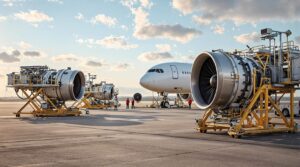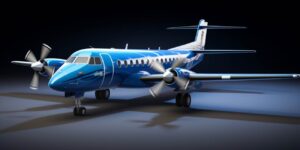One of the striking commonalities between Airbus and Boeing lies in their commitment to pushing the boundaries of technological advancements. Both companies engage in a perpetual race to introduce state-of-the-art aircraft that not only redefine air travel but also set new benchmarks in fuel efficiency, safety, and passenger comfort. This unyielding commitment to innovation is embedded in the DNA of both Airbus and Boeing, driving them to consistently outdo each other in the quest for cutting-edge aviation solutions.
Moreover, the global market dominance achieved by Airbus and Boeing is a testament to their unwavering dedication to meeting the diverse needs of airlines worldwide. These aerospace giants have created an intricate web of partnerships and collaborations with airlines across the globe, solidifying their positions as indispensable players in the aviation landscape. The ability to cater to a multitude of market segments, from regional carriers to long-haul international flights, showcases how Boeing and Airbus alike have mastered the art of adaptability.
The similarities extend beyond technological prowess and market dominance; both companies face the perpetual challenge of navigating the intricate web of regulatory frameworks and geopolitical considerations. The aviation industry is not just about engineering marvels; it is also a complex dance with governments, regulatory bodies, and international politics. In this intricate ballet, Boeing and Airbus share the stage, each maneuvering through a labyrinth of rules and regulations to ensure compliance while maintaining a competitive edge.
Furthermore, the financial dynamics of Airbus and Boeing mirror each other in many ways. Both companies grapple with the cyclical nature of the aviation market, where economic downturns can significantly impact orders and deliveries. The ebb and flow of demand for new aircraft, influenced by economic factors and global events, creates a challenging environment that both Airbus and Boeing must navigate with strategic foresight.
Examining the production processes of these aviation behemoths unveils another layer of similarity. Both Airbus and Boeing operate vast manufacturing facilities, employing cutting-edge technologies to ensure the efficiency and precision of their assembly lines. The complexities of producing aircraft on such a massive scale require meticulous planning, coordination, and a constant pursuit of operational excellence, all of which are intrinsic to both companies.
In essence, the parallels between Airbus and Boeing are deeply embedded in their shared commitment to innovation, global market dominance, regulatory adeptness, financial resilience, and efficient production processes. As these aviation titans continue their perpetual tussle for supremacy, the aviation industry remains a dynamic and captivating arena shaped by the remarkable similarities between Airbus and Boeing.
Airbus and boeing compete over latest innovations in wing and engine design
Competition between Airbus and Boeing in the aerospace industry has always been fierce, with both giants vying for supremacy in the latest innovations in wing and engine design. The quest for efficiency, fuel economy, and environmental sustainability has propelled these companies to push the boundaries of aeronautical engineering.
One of the key battlegrounds for this rivalry is the development of cutting-edge wing designs. Airbus has been at the forefront with its revolutionary sharklet technology, which aims to reduce drag and improve fuel efficiency. These upward-curving wingtips have become a signature feature on Airbus aircraft, enhancing aerodynamics and contributing to significant fuel savings over long-haul flights.
On the other side of the spectrum, Boeing has been investing heavily in its blended winglet technology. These winglets seamlessly integrate with the aircraft’s wings, minimizing drag and optimizing lift distribution. Boeing’s approach focuses on achieving a balance between aerodynamic efficiency and structural integrity, providing an edge in both performance and safety.
When it comes to engine innovation, both Airbus and Boeing are engaged in a relentless race to produce powerplants that are not only more powerful but also more fuel-efficient. Airbus has been collaborating with engine manufacturers to incorporate the latest advancements in composite materials and 3D printing to create lighter and more durable components. This not only enhances overall engine performance but also contributes to the aircraft’s overall weight reduction.
Boeing, on the other hand, has been championing the development of high-bypass turbofan engines. These engines prioritize fuel efficiency by allowing a greater volume of air to bypass the engine core, resulting in improved fuel consumption. The focus is not only on raw power but on achieving a balance between thrust and fuel economy, a critical consideration in the modern aviation landscape.
As the competition intensifies, both companies are also investing heavily in digital technologies to enhance the design and manufacturing processes. Computer-aided design (CAD), simulations, and artificial intelligence are playing pivotal roles in accelerating innovation cycles and optimizing performance parameters.
Boeing and airbus offer similar onboard entertainment systems
When it comes to in-flight entertainment systems, both Boeing and Airbus have raised the bar by offering state-of-the-art solutions. Passengers aboard their aircraft are treated to a plethora of entertainment options, ensuring a delightful journey from takeoff to landing. The cabin design plays a pivotal role in enhancing the overall in-flight experience, and both aviation giants have meticulously crafted interiors that balance aesthetics and functionality.
Boeing and Airbus have invested significantly in creating cutting-edge entertainment systems that cater to the diverse preferences of modern travelers. The cabin design seamlessly integrates these systems, providing an immersive experience for passengers. Whether it’s movies, music, or interactive games, the in-flight entertainment options on Boeing and Airbus aircraft are designed to keep passengers engaged throughout their journey.
Stepping into the realm of cabin design, Boeing and Airbus showcase their prowess in optimizing space and comfort. The layout and arrangement of seats, lighting schemes, and overall aesthetics contribute to a pleasing atmosphere. Both manufacturers prioritize ergonomic design elements to ensure that passengers experience maximum comfort during their time in the air.
Passenger comfort is a key focus in the ongoing competition between Boeing and Airbus. The design of seats, the amount of legroom, and the overall spatial arrangement are meticulously planned to provide an optimal level of comfort. This extends beyond just the seating arrangements – Boeing and Airbus also pay attention to factors like noise reduction and ambient conditions to create an environment that minimizes the impact of travel fatigue.
One notable aspect of their commitment to passenger comfort is the use of advanced materials in the cabin design. Lightweight yet durable materials are employed to enhance fuel efficiency while ensuring a robust and aesthetically pleasing interior. This demonstrates a shared commitment by Boeing and Airbus to provide a superior flying experience that combines cutting-edge entertainment with thoughtful cabin design for unparalleled passenger comfort.
Fuel efficiency and environmental impact are key areas where airbus and boeing aim to outperform each other
Both Airbus and Boeing are engaged in a fierce competition, striving to outperform each other in crucial domains that resonate with contemporary concerns – fuel efficiency, emissions reduction, and overall environmental impact. These aerospace giants understand the significance of addressing environmental challenges, and their ongoing rivalry extends beyond market share and technological innovation.
The quest for superior fuel efficiency takes center stage as both companies deploy cutting-edge technologies and engineering marvels to enhance the performance of their aircraft. Innovations in aerodynamics, lightweight materials, and advanced engine designs become pivotal elements in the relentless pursuit of reduced fuel consumption. Each percentage point gained in fuel efficiency translates not only into economic advantages for airlines but also a tangible step towards a more sustainable aviation industry.
As the aviation sector grapples with its environmental footprint, emissions reduction emerges as a critical focal point for Airbus and Boeing alike. Stricter regulations and growing environmental awareness drive these companies to explore cleaner and greener alternatives. Advanced propulsion systems, biofuels, and novel manufacturing techniques become the battleground for achieving substantial reductions in carbon and other pollutant emissions. The commitment to emissions reduction aligns with a broader industry movement towards a more eco-friendly future.
However, the ultimate goal transcends individual elements like fuel efficiency or emissions reduction, encapsulating a holistic approach to mitigating the environmental impact of aviation. Both aerospace giants are acutely aware of their responsibility to balance technological progress with environmental stewardship. This recognition materializes in comprehensive strategies that encompass the entire life cycle of an aircraft – from design and manufacturing to operational efficiency and end-of-life considerations.
The rivalry unfolds not just in technical prowess but in a strategic dance, with both companies vying to showcase their commitment to environmental sustainability. The marketplace becomes a stage where Airbus and Boeing compete not only for the favor of airlines but also for the approval of an increasingly eco-conscious global audience.
Tables of specifications and comparative data frequently grace industry discussions, outlining the strides made by each company in the realms of fuel efficiency, emissions reduction, and environmental impact. These tables serve as visual aids, allowing stakeholders to grasp the intricacies of technological advancements and the tangible benefits conferred upon the environment.






